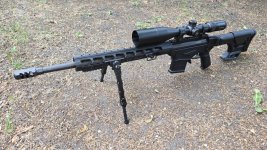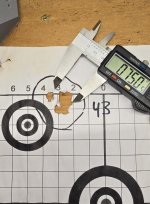So in perfect world this would be true, what reloaders are chasing is the most forgivable round. My loads are not perfect, but at 43.5gr powder was getting ES of 40, at 43 ES of 16, with weighing out each load to the nearest 0.01gr. 43gr shots lot better group because it is more forgivable to tiny changes on powder charge.
Now if every load were perfectly the same, powder, case volume, neck tension, coal then they would all fire perfect groups, but there is no perfection there will always be variables so the search for the most forgivable round continues!








































































